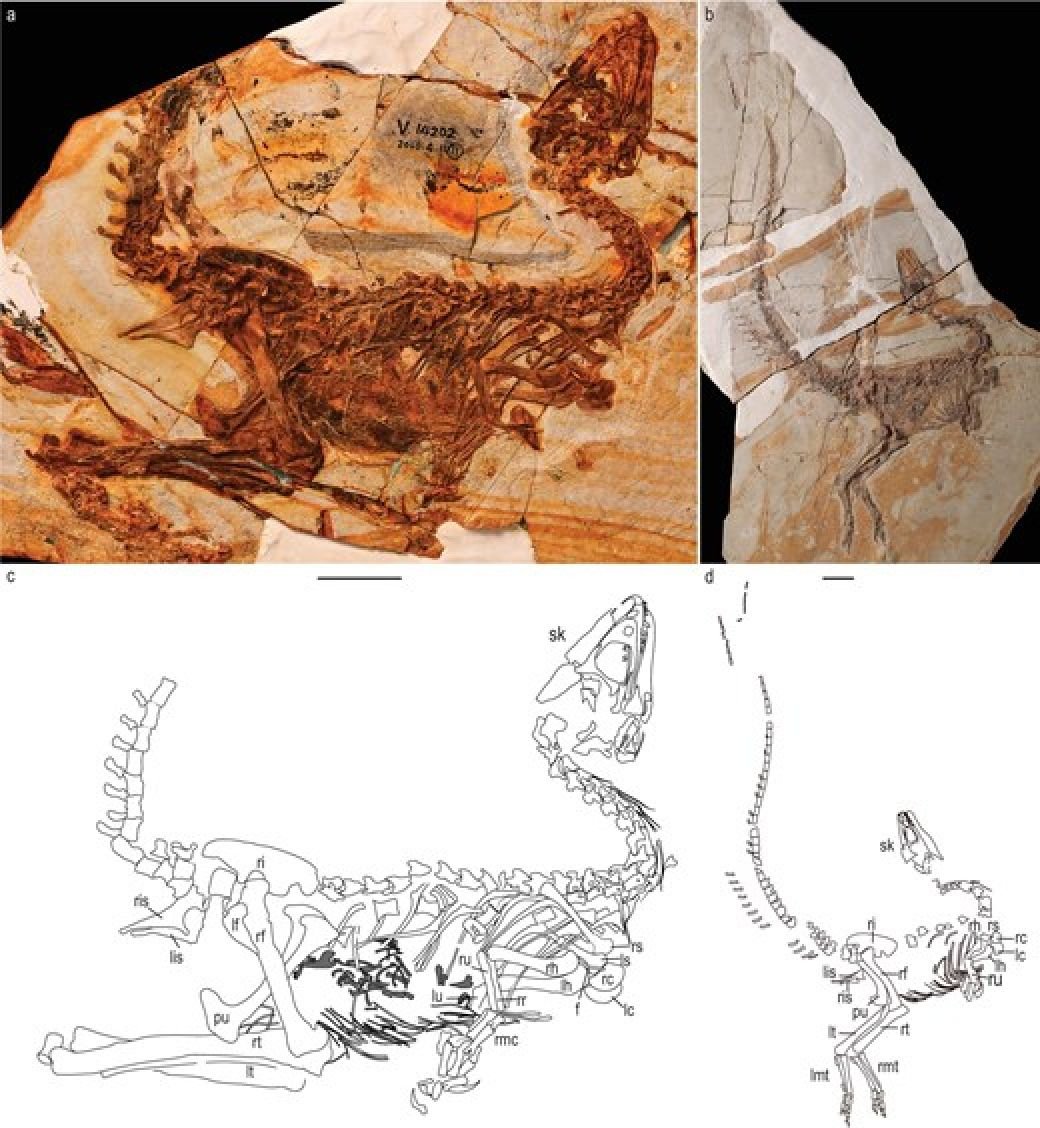A remarkable fossil discovery in northeastern China has revealed a twisted prehistoric food chain – a dinosaur species that devoured a mammal, which itself may have preyed on dinosaurs.
The findings, detailed in a study published in National Science Review, highlight a complex predator-prey dynamic between dinosaurs and mammals 125 million years ago.
The fossilised remains of Huadanosaurus sinensis – a newly identified compsognathid-like theropod dinosaur – were found in Liaoning province in what is known as the Yixian geological formation, a treasure trove of Early Cretaceous fossils.
Do you have questions about the biggest topics and trends from around the world? Get the answers with SCMP Knowledge, our new platform of curated content with explainers, FAQs, analyses and infographics brought to you by our award-winning team.

Scientists discovered two small mammals inside the juvenile dinosaur’s stomach cavity. One was a eutherian, a distant relative of modern placental mammals. The second was a gobiconodontid, a group that includes the Repenomamus – a badger-sized mammal known to feast on small dinosaurs.
This discovery creates a striking ecological loop. Earlier fossils showed Repenomamus mammals with baby dinosaur bones in their stomachs, suggesting they actively hunted or scavenged dinosaurs. Now it appears that Huadanosaurus turned the tables, preying on mammal predators.
The eutherian in its gut was swallowed whole, indicating Huadanosaurus likely killed its prey with a powerful bite.
“We describe two new compsognathid-like species, [Sinosauropteryx lingyuanensis] and [Huadanosaurus sinensis] from the Lower Cretaceous Yixian Formation,” the researchers from China and the United States said in a paper in the May issue of the peer-reviewed journal National Science Review.
Compsognathidae are a family of coelurosaur theropods, a group of carnivorous, mostly bipedal dinosaurs that also included the Tyrannosaurus.
“The Compsognathidae was originally considered an early diverging clade of coelurosaur theropods. However, recent study suggests that Compsognathidae is not monophyletic,” or all descended from a common ancestor, the team said.
They said the discovery of the two new dinosaurs, along with a previous species, indicated that compsognathid-like theropods from the Early Cretaceous Jehol Biota that were previously grouped within Compsognathidae were actually more closely related to each other.
This means the Jehol Biota specimens should be seen as a distinct group under the family Sinosauropterygidae, according to the team from the Chinese Academy of Sciences Institute of Vertebrate Palaeontology and Paleoanthropology, and City University of New York.
The first new dinosaur identified, the Huadanosaurus, was a nearly complete juvenile skeleton with a structure that suggested it fed on prey much smaller than itself.
The remains of two types of mammals, eutriconids and eutherians, were found in its stomach cavity. The skeleton of the eutherian was intact, suggesting it was swallowed whole.
The Huadanosaurus likely caught the small prey live and killed it with its strong bite.
The researchers said one of the small prey appeared to be from the family Gobiconodontidae, a diverse family of extinct mammals from the mid-Jurassic to Early Cretaceous period.
One of the mammals within this family was the Repenomamus, a genus of badger-sized mammals found in the same formation in Liaoning province from the Early Cretaceous.
Previous evidence has indicated that the Repenomamus ate vertebrates, including small dinosaurs, though it is still unclear whether they hunted live dinosaurs or scavenged corpses.
This previous fossil finding and the new study suggest that dinosaurs and mammals in the region may have formed a food web in which they were both predator and prey to each other.
The Sinosauropteryx specimen, on the other hand, had a smaller and weaker skull than the Huadanosaurus and was found with lizard remains in its abdominal cavity.
This suggests that the two dinosaurs had different hunting styles and preferred prey, and may have even been active at different times of the day.
The Sinosauropteryx had feather filaments covering its body, which could have been used as camouflage under direct sunlight, while the Huadanosaurus may have been nocturnal.
“The morphological diversification within the same theropod clades from the same sedimentary unit is exceedingly rare,” but it occurred among different groups in the Yixian Formation, according to the paper.
“The unique composition of theropod species in the Yixian Formation suggests a lack of species exchange with other regions due to geographic barriers created by crustal contraction and extension, and sporadic magmatism during the Early Cretaceous.”
More from South China Morning Post:
- Denisovans first discovered in Russia reached Taiwan Strait, fossil gene evidence suggests
- Oh rats! Did Zheng He’s Ming era Treasure Fleet help spread rodents around the world?
- Chinese basin may have been a refuge during largest mass extinction. Do we need another?
- Scientists find genetic link between Attila’s Huns and Xiongnu empire that fought Han China
For the latest news from the South China Morning Post download our mobile app. Copyright 2025.





